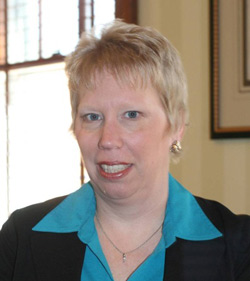Five Minutes With Audio & Video Home
fiveminuteswith
Sharing Successful Deferred Maintenance Strategies
Kathie Shafer is vice president for operations at Messiah College, located in Grantham, Penn., just outside Harrisburg. Shafer manages 35 buildings and several small houses that combine to make up 1.3 million square feet spread over 450 acres.
Her department is a success story in the fight against deferred maintenance. During her 10 years at Messiah, the private university went from having no deferred maintenance plan to developing a proactive process that produces advanced funding for projects and educates upper management on the importance of keeping buildings in working order.

Kathie Shafer
Vice President for Operations
Messiah College,
Grantham, Penn.
1.Why do you think so many facilities struggle to keep deferred maintenance in check?
Facilities struggle to keep up with deferred maintenance because that is not what anyone wants to spend limited funds on. Colleges are challenged to keep tuition down and they are dependent on tuition dollars to operate. When it comes to funding new windows or something cool for the professor and teaching they money goes to (education).
2. Has your facility struggled with deferred maintenance in the past and if so, what kinds of situations have you encountered?
Ten years ago, Messiah College did not have a plan for deferred maintenance. The facilities team needed to submit every item they wanted funding for. Then a group, without knowledge (of the needs), voted on what to fund. This was a disaster. They did not know what to fund and often chose on the cost and not the importance.
3. What are some of the strategies that you employ as a manager to solve deferred maintenance issues?
Ten years ago, when I became VP of operations, I completed a full facility audit. This provided the college with a comprehensive report on current and future issues. With Board of Trustee support, for the last seven years, we have been given a committed amount of funds to address issues as the facilities team sees best. This allows for better planning.
4. Why do you advocate the idea of funding energy efficiency projects first when addressing maintenance needs?
Energy efficient projects not only allow us to address maintenance issues, it helps reduce operating costs, allowing more funds to be used in the operating and capital budgets without impacting the tuition to students. Also, we are very committed with sustainable practices.
5. What are the advantages of bundling other projects within one facility and completing them before moving to another building?
Bundling projects gives you so much more for your dollar. The synergy of new projects with deferred maintenance projects means you have a space that is new and updated. You don’t have to go back every few years. You can move on to other areas.
6. A significant number of managers in our poll said they feel positive about addressing their deferred maintenance issues over the next decade. Do you agree that there is reason for optimism?
I do think there is more reason for optimism. On college campuses, funds for new projects are limited, but presidents, vice-presidents and boards now understand that they need to continue to put money into existing spaces because we can’t afford to add new. Also, colleges are not growing in enrollment, so added space is often not needed.
Find more on this topic:
deferred maintenance, education facilities, universities
posted: 8/11/2015








